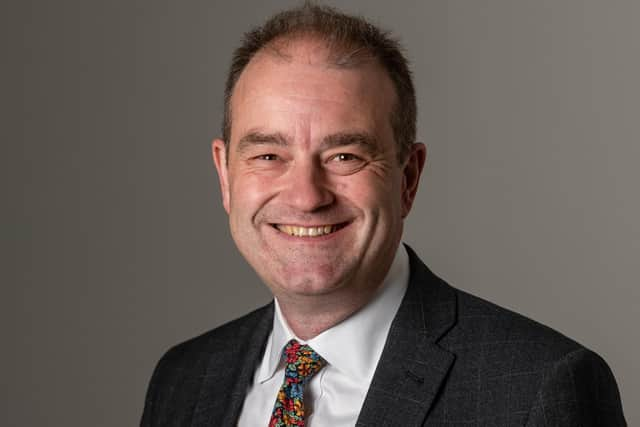We need to find a cure for Scotland's GP recruitment crisis - Andy Drane
Back in 2018 Scotland faced a shortage of 800 full-time equivalent GPs with many leaving the profession due to various factors including burn-out, disillusionment with the running of the NHS, and UK Government pension rules disincentivising older doctors from continuing to serve.
Pensions legislation has since been reformed and we’re seeing a stream of newly-qualified doctors coming through. However, many either choose to work elsewhere in the NHS or serve as locums or salaried doctors, unprepared to assume the business risk that comes with partnership in a GP practice. This threatens the survival of many practices where existing partners are reaching retirement.
Advertisement
Hide AdAdvertisement
Hide AdThe new GP Contract introduced by The Scottish Government in 2018 was supposed to help address this issue so why, six years on, are we in this position?


A core challenge continues to be premises-associated risk. The GP Contract included zero per cent loans on the building value to support GP-owned surgeries. This allowed doctors to replace expensive bank borrowings with free Government-funded borrowing. This measure has, however, been slow in delivery, and while it has stabilised some practices, it has not meaningfully increased the number of new GP partners. The loan application process is also fragmented as Scotland’s 14 Health Boards hav e their own criter ia for implementation.
The GP contract also set out to help practices within leased premises by enabling them to transfer their lease to their Health Board, but this too has been a painfully slow and fragmented process. It means many doctors remain bound by legacy lease liabilities which serve as a further deterrent in attracting new GPs who are reluctant to take on what could be a significant personal financial obligation.
The Scottish Government could help address this GP crisis taking on the risk associated with practice leases ensuring doctors no longer have to face this burden. While this comes with an impact on public finances, there is a clear benefit if it helps ensure that GP practices continue to operate across Scotland.
Instead, some Health Boards appear intent on increasing the financial burden for practices by dramatically raising charges levied on practices occupying Health Board run premises.
Further growth of ‘super GP practices’ – pooling together to share management, finance, HR and other functions – is another option to help make practices viable and reduce the financial risks facing doctors.
Many other professional firms are run as Limited Liability Partnerships (LLP). Adopting this model could also further stabilise GP practices and encourage new partners to join. The LLP approach ensures doctors’ personal assets won’t be affected by financial liabilities arising from their GP practice.
The policy support underpinning the 2018 GP Contract was very welcome, but its roll-out needs to be greatly accelerated and unified across all Health Boards. An element of local flexibility makes sense but we need consistent, clear, unequivocal direction from the Scottish Government in how its key measures are delivered.
Advertisement
Hide AdAdvertisement
Hide AdAs the NHS continues to cope through increased levels of illness that accompany this time of year, it is essential we address the ongoing decline in GP partner numbers if we are to maintain a viable, effective service across Scotland. Failure to grasp this challenge could make each and every month feel a lot like January.
Andy Drane is a Partner, Davidson Chalmers Stewart
Comments
Want to join the conversation? Please or to comment on this article.